|
Getting your Trinity Audio player ready...
|
Some of my earliest memories include riding shotgun in my dad’s 1962 Chevy Impala while crisscrossing the U.S. on family summer trips to Rocky Mountain National Park, the Great Smoky Mountains, Yellowstone and the Grand Tetons. These family camping trips gave me a passion for wilderness exploration in our National Parks.
My first such memory goes back to one such trip in late July 1972. I was 7 years old and my family had just set up camp in Rocky Mountain National Park’s Moraine Park Campground when we took the short drive to Bear Lake. The Bear Lake Nature Trail immediately became one of my absolute favorite, easy hikes! The lake and scenery is just stunning. As I look back at this hike, I believe this was a beginning for me. When I started to realize that I loved our National Parks and the adventures that they bring.
Here’s a listing of 10 of my most favorite National Parks in the USA. I made this listing, in no particular order, based on my own experiences in each of these parks. For more than 100 years, the National Park Service has managed millions of acres solely for the “enjoyment, education and inspiration of this and future generations.”
Today, the USA’s 63 national parks draw millions of visitors each year to their amazing natural wonders and unforgettable terrains.
The USA’s National Parks are filled with amazing marvels that must be seen to be believed, including the most spectacular geothermal site in Yellowstone, the grandest canyon, and Yosemite’s granite cliffs, waterfalls, and giant sequoia groves.
Parking and national park entry reservations may be required at select parks. See Recreation.gov to make the required reservations.
Rocky Mountain National Park
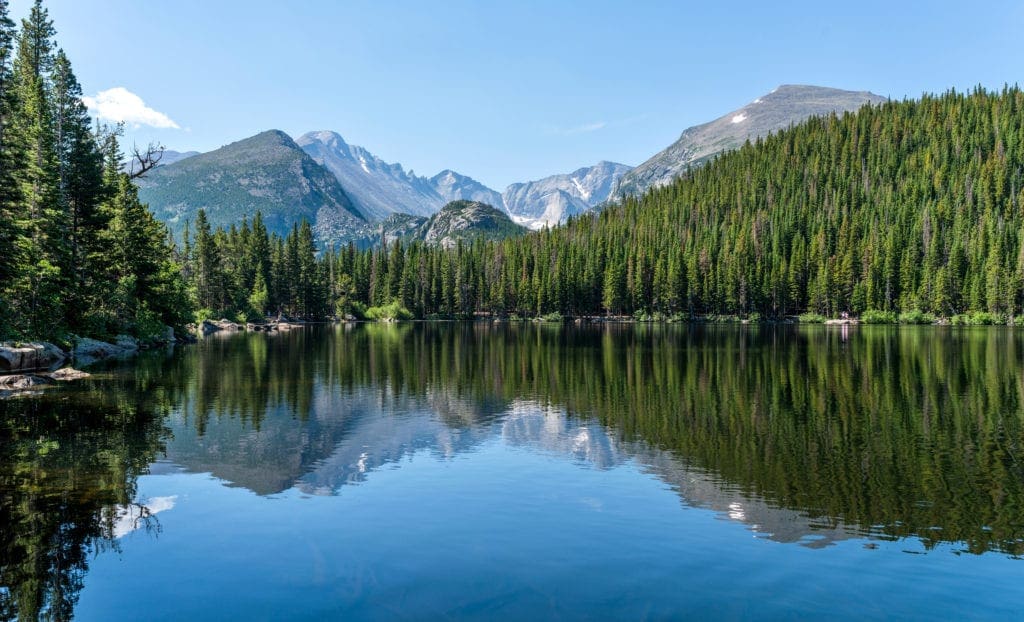
Wonderful views of Longs Peak and Glacier Gorge reflecting in blue Bear Lake on a calm Summer morning, Rocky Mountain National Park, Colorado.
Rocky Mountain National Park sits in northern central Colorado, just outside the city of Estes Park. The park spans over 265,000 acres across the Rocky Mountains as it straddles the Continental Divide. Established back in 1915, this park is one of the most biodiverse national parks in the entire country with varying landscapes stretching to the west and east. With rugged terrain, alpine lakes, waterfalls, a scenic highway, and seemingly countless hikes and rock scrambling routes, it’s no wonder that Rocky Mountain National Park is one of the most visited parks in the United States.
For more information on things to do in Rocky, see our Adventurer’s Guide.
The Ultimate Offline GPS Hiking & Ski Maps
See why onX Backcountry is the ultimate GPS navigation app for your outdoor pursuits. Try Today for Free. No credit card required.
Yosemite National Park
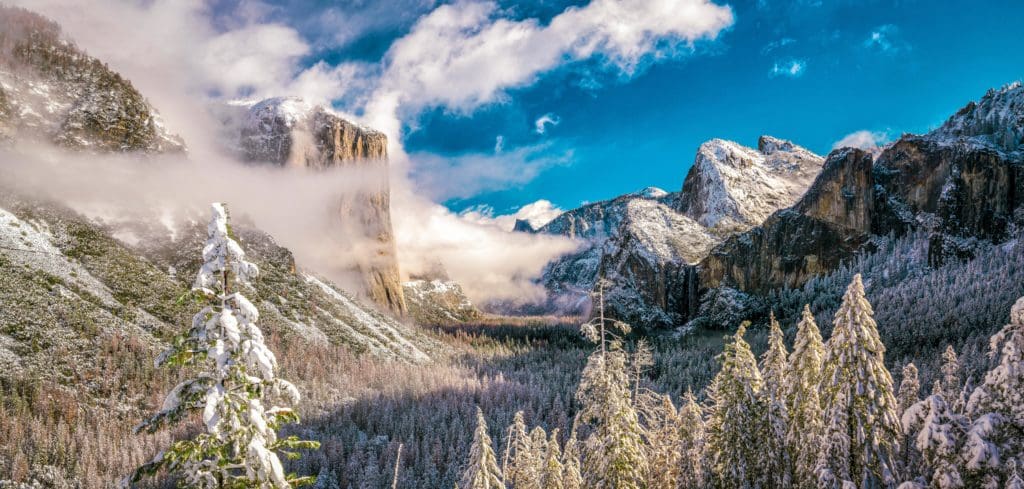
Yosemite National Park in winter.
From famous writings by famous writers to famous climbs by famous rock climbers, Yosemite is probably the most talked-about National Park on Earth. It’s widely celebrated for the stark beauty of its towering granite walls, its alpine meadows humming with life, and its silent forests of gigantic trees. The Yosemite Valley is so famously beautiful that most people who know it refer to it simply as “The Valley,” as if by comparison, any other mountain valley wasn’t worthy of the title.
But is it all just talk? What’s so special about big white cliffs and mountains, anyway? It’s hard to capture the pristine natural wonder of a place in words. But it’s our job, and we’re going to try anyway. That’s why we put together our adventurer’s guide, to convince you why Yosemite National Park has a place on your bucket list, and to give you the information you need to know to actually go see it.
For more information on things to do in Yosemite, see our Adventurer’s Guide.
Yellowstone National Park
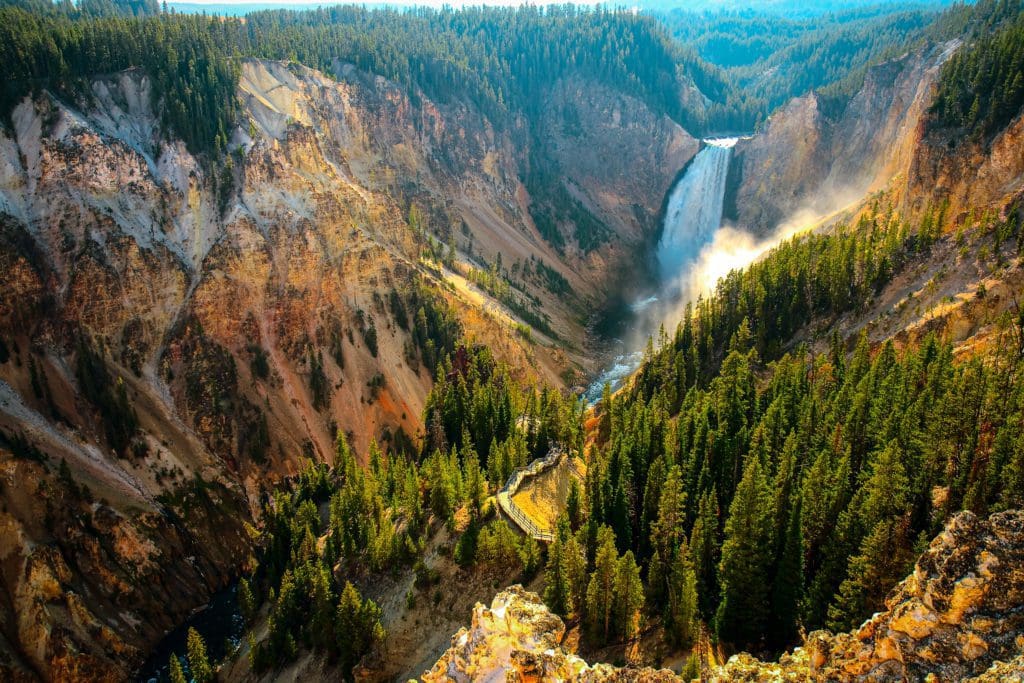
Sunlight illuminates the spray as the Yellowstone River crashes over the Lower Falls in Yellowstone’s Grand Canyon.
It’s possible that there is more to say about Yellowstone than any other National Park in the United States. It boasts geological marvels that cannot be seen anywhere else on earth. It is populated by thriving, charismatic wildlife. And its human history is fascinating, though it is still unfolding today. It’s a lot to unpack, all told. So where do you even begin?
That’s where we come in. Our adventurer’s guide compiles everything we know about Yellowstone and trimmed the fat to present you with the essential information you need to visit and enjoy Yellowstone. It contains some of the park’s colorful history, its natural splendor, and a thorough list of ways to explore and adventure while you’re there. Whether you’re planning a trip to the “land of fire and brimstone” or have never even thought about it, our guide was made with you in mind.
For more information on things to do in Yellowstone, see our Adventurer’s Guide.
Global Rescue has expanded services to include local field rescue within 100 miles of home. Global Rescue is there whether you’re hiking, kayaking, snowmobiling, fishing or simply enjoying the outdoors and get ill or injured and you’re unable to get to safety on your own. Global Rescue is the red button you push in an emergency. Their team of medical and security experts come through for you when it matters most.
Glacier National Park
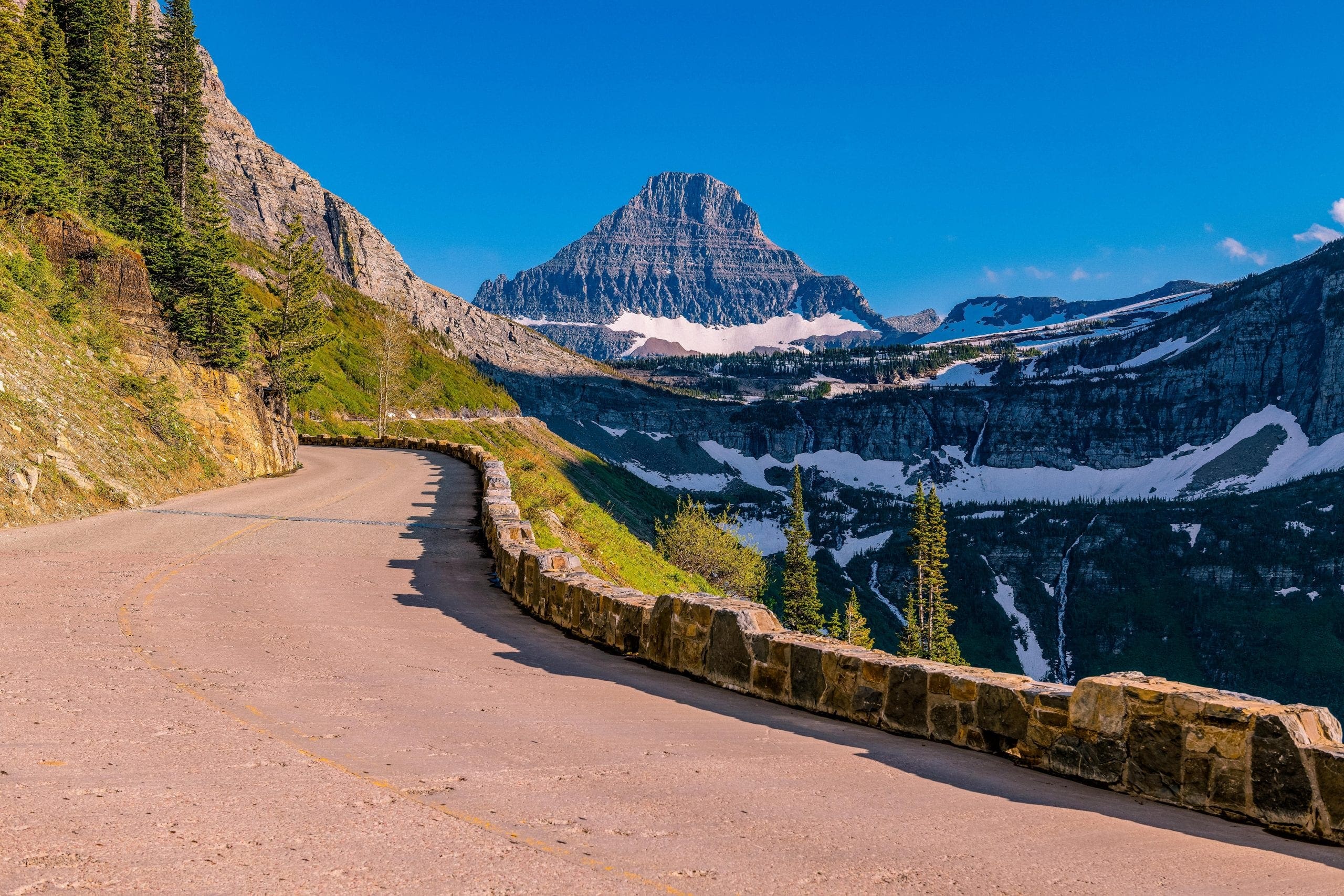
Beautiful view of Glacier National Park belong Going to the sun road
Located in the northwestern region of Montana lies Glacier National Park. This iconic park spans over 1,000,000 acres across the state and was established in 1910. Throughout the expansive park lie two subranges of the Rocky Mountains, glaciers, over 700 lakes, and seemingly endless species of animals and plants. The rugged and diverse landscape of the park covers much of northwestern Montana and extends north up to the Canadian-United States border. The early establishment of the park has helped preserve the landscape while protecting the native species that inhabit its various ecosystems.
For more information on things to do in Glacier, see our Adventurer’s Guide.
Grand Canyon National Park
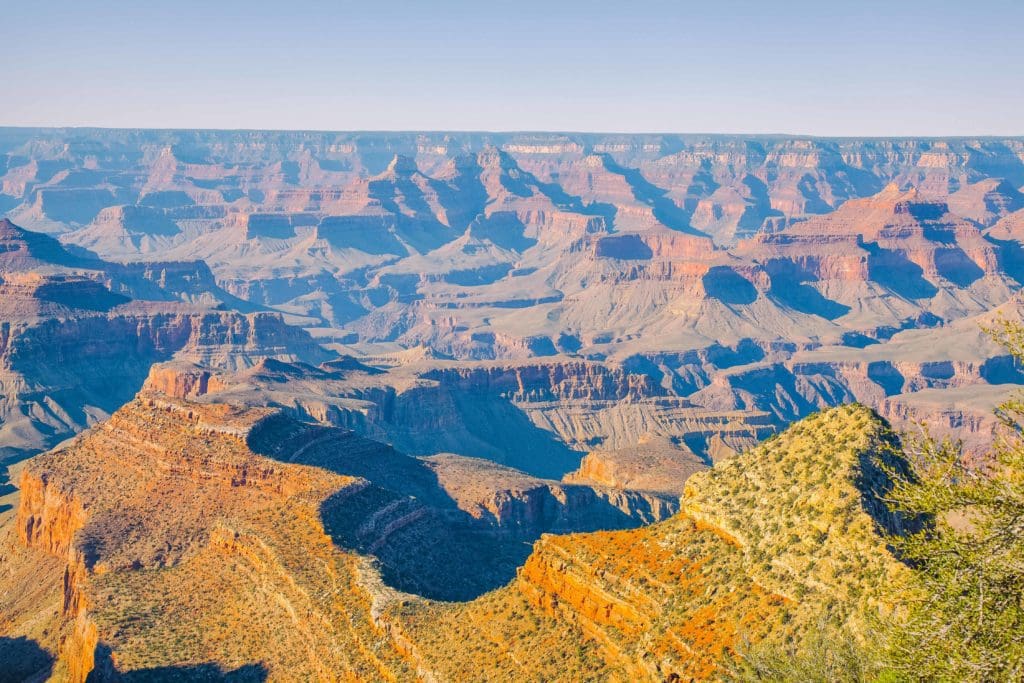
View of the colors of the Grand Canyon from Grandview Point Lookout
The Grand Canyon is a cavernous amphitheater spanning eighteen miles across, a yawning pit carved into a flat mesa by one of the great rivers of the United States. Layered with bands of stone and crosscut by twisting side canyons, it is truly an awe-inspiring sight. It’s one of the Seven Natural Wonders of The World and has a place on anybody’s bucket list. But for most visitors, that’s all it is. Something to drive to, to look at, to take pictures of.
What you may not have realized is that it is also a vast expanse of wilderness which is surprisingly not completely inaccessible. That is, if you have the skills and the equipment to venture in. The Grand Canyon was once the last blank spot on the map of America, and to this day it remains one of the most rugged, pristine, and sometimes even treacherous landscapes in the country. It’s secrets: oases, slot canyons, waterfalls, and wildlife all beckon to the would-be intrepid explorer daring enough to go forth. Does that sound like you?
If yes, then our adventurer’s guide is for you. If no, then maybe we can convince you otherwise. We put together our guide to Grand Canyon National Park to give you all the essential information you need to visit and enjoy the park and everything it holds. You never know, this guide might be the inspiration for your next adventure.
For more information on things to do in Grand Canyon, see our Adventurer’s Guide.
Zion National Park
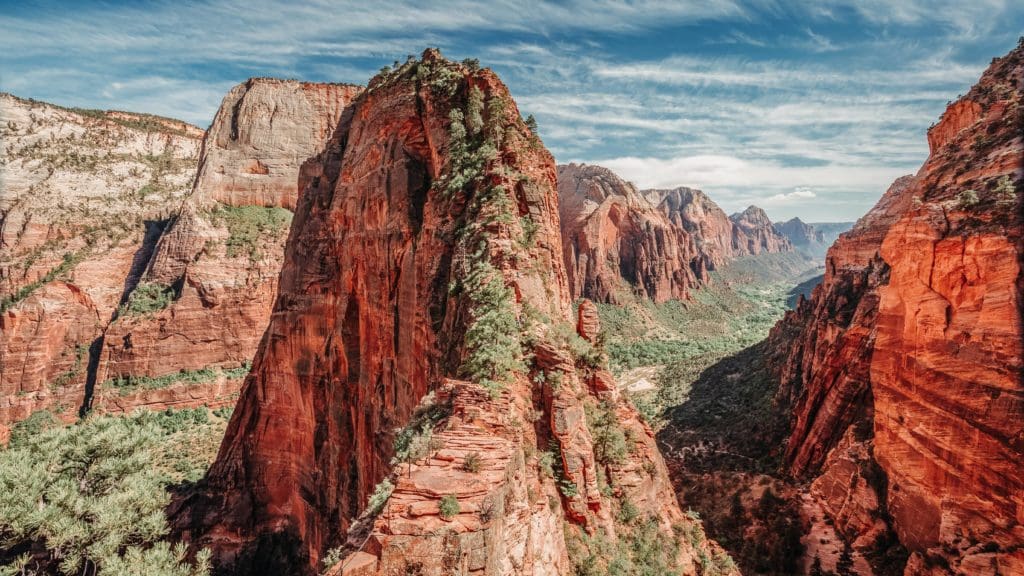
Spectacular hike to Angel’s Landing in Zion national park, Utah
Looking out over Zion Canyon from the top of Angels Landing, you’re transported. The colossal vertical faces of sandstone speckled in the dark green of desert foliage, presiding over the lush banks of the Virgin river is absolutely spectacular. For a moment, you forget where you are. The valley appears almost like the heart of some strange primordial jungle. You think to yourself, “what planet am I on right now?”
For all intents and purposes, Zion National Park may as well be its own planet. Its mysterious, desolate canyons trace meandering paths into the stone, forming deep, tranquil hallways of rock where snowmelt babbles over ancient cobblestones. It’s uniqueness is unparalleled. But the vast majority of Zion’s visitors never experience these remote delights. As visitation in Zion National Park continues to soar year after year, seeing the park has become exponentially more difficult. So we decided to put together a short handbook to Zion for you, the prospective adventurer, seeking solace in nature. Complete with the must-sees, some elusive bucket list items, some pro tips for how to manage it all, and a few more reasons to go.
For more information on things to do in Zion, see our Adventurer’s Guide.
The Ten Essentials: How to Equip Yourself for the Backcountry
Packing the “Ten Essentials” whenever you step into the backcountry, even on day hikes, is a good habit. When something goes awry, you’ll truly appreciate the value of carrying these items that could be essential to your survival.
Grand Teton National Park
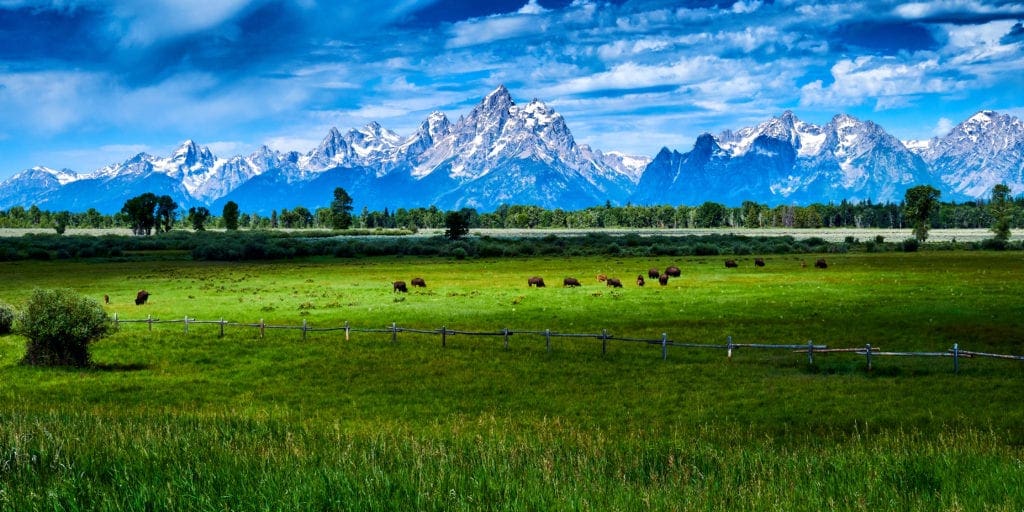
Bison grazing in the Teton Valley near Grand Teton National Park, Wyoming.
There is something indescribably magnetic about the pyramidal pinnacles of the Teton Mountains. Looking over the skyline of the range, it’s hard not to wonder what lies nestled in the valleys and saddles between the peaks. This is the home of bighorn sheep, of things that thrive where humans rarely go. The spires of rock are sliced by deep box canyons, speckled with glaciers, grooved into by trickles of icy water. Below the peaks, a sweeping, grassy plain sprawls. Bison, moose, and elk graze on the banks of placid, ancient lakes, each babbling into the enigmatic Snake River. In a word, the entire landscape is enchanting.
For more information on things to do in the Tetons, see our Adventurer’s Guide.
Bryce Canyon National Park
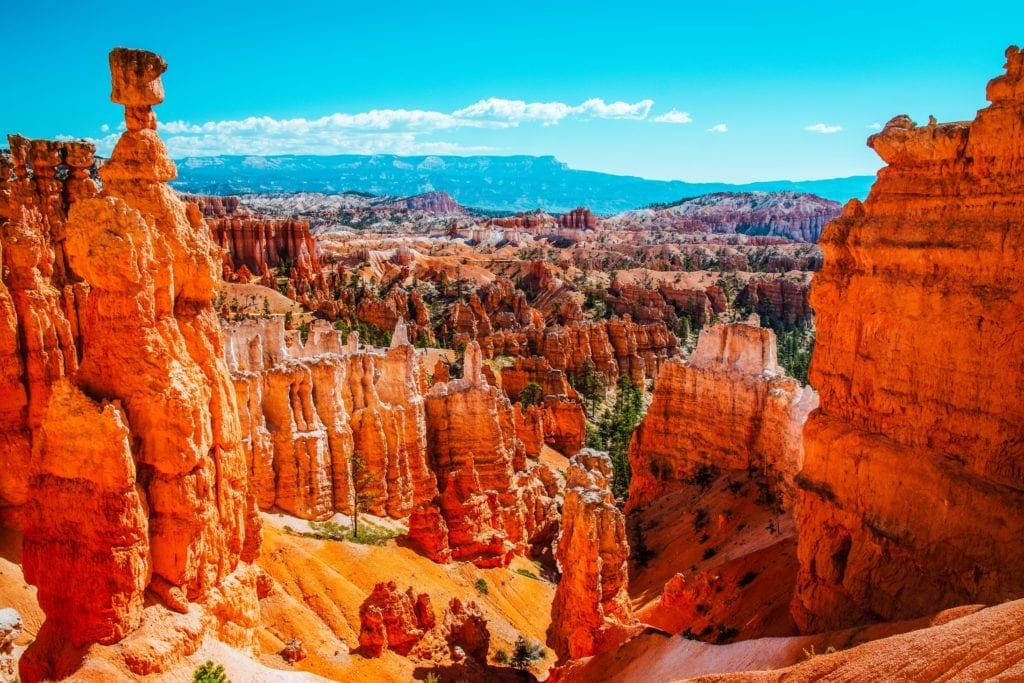
Bryce Canyon National Park at Navajo Loop Trail, Utah.
They say big things come in small packages. When you get an idea of how much one-of-a-kind desert magic Bryce Canyon has to offer, despite being the smallest National Park in Utah, you’ll believe it. In a nutshell, Bryce is a forest of needle-thin spires, or hoodoos, formed in wide open amphitheaters. Descending from the top of the Paunsagunt Plateau above 9,000 feet, Bryce Canyon drops rapidly just over 2,000 feet. This is harsh country – steep slopes walled by mazelike channels through the multicolor dirt etch narrow paths down and around the plateau. Ponderosa pines grow tall in tiny crevices between skyward towers striped in brown, pink, red, yellow, orange, purple, and white.
For more information on things to do in Bryce Canyon, see our Adventurer’s Guide.
Arches National Park
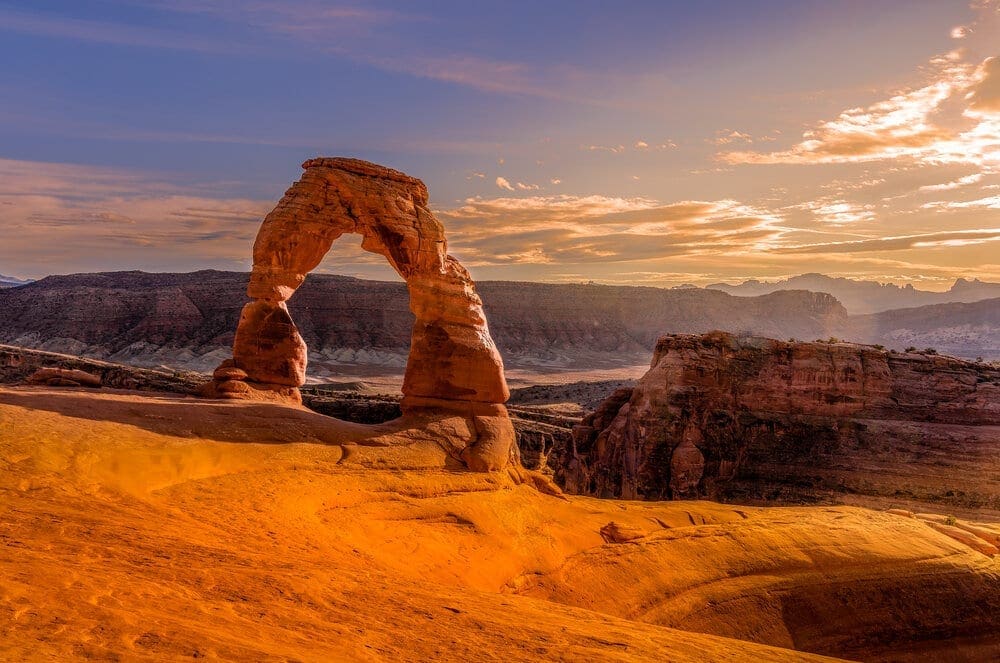
Delicate Arch at Sunset, Arches National Park near Moab, Utah.
If you’ve ever seen Utah represented by a major landmark on a map, or seen a Utah license plate, or even just googled “Utah”, you’ve seen a little piece of Arches National Park. More specifically, we’re referring to the state’s most iconic natural feature – Delicate Arch. Standing 52 feet tall and poised at the edge of a cliff overlooking Salt Wash and the snowcapped La Sal mountains beyond, it’s easy to see why this landscape has symbolized the otherworldly natural beauty of Southern Utah for so long.
But Arches is far from being just a scenic drive to the foot of Delicate Arch. The park is home to the highest density of natural arches in the world. There are also astounding towers, hoodoos, fins, and other geological marvels in high concentration here. Pound for pound, you can see more unique natural spectacle in a day in Arches than almost anywhere else in the country.
For more information on things to do in Arches, see our Adventurer’s Guide.
Sequoia National Park
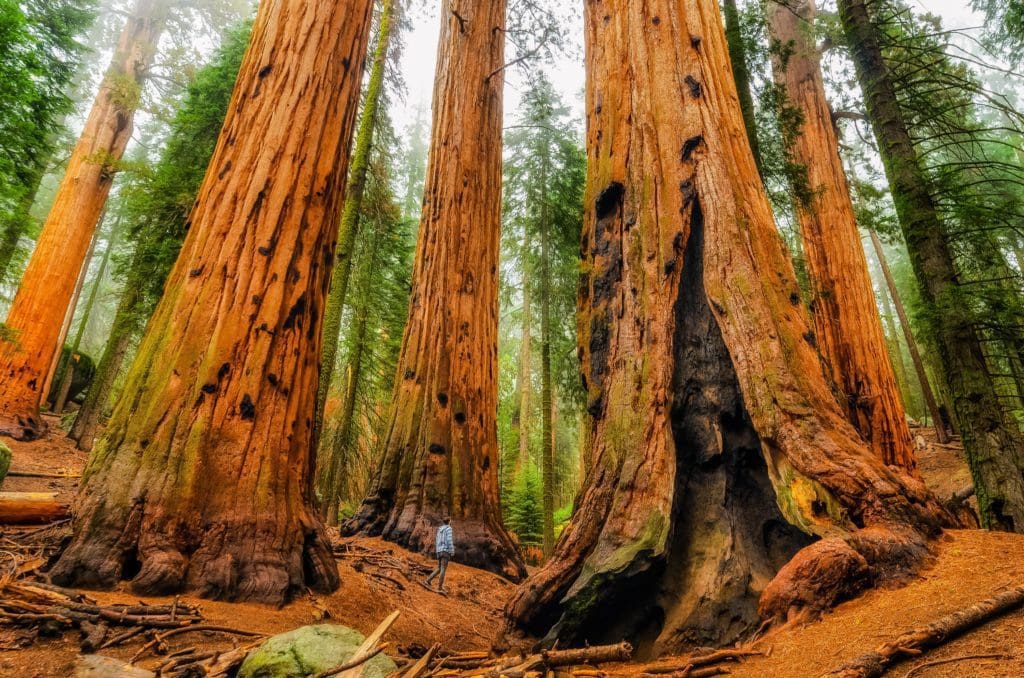
Hiker is walking and looking at the giant sequoia trees in Sequoia National Park.
Imagine walking through a forest on a cool summer afternoon. The light filters through the pine needles and leaves overhead, illuminating patches of clover and new seedlings pushing up out of the ground. Now imagine that same landscape, if you were the size of a mouse. That’s what it feels like to explore Sequoia National Park.
But Sequoia is far more than just home to the world’s largest trees. It is a colossal expanse of mountain wilderness that covers over 13,000 feet in elevation. Spectacular granite cliffs, winding rivers, secret caves, and pleasant meadows teeming with wildlife dot every corner of the map here.
For many, Sequoia National Park can be done in an afternoon. But we know better. That’s why we put together this guide to help you, the prospective adventurer, see the full spectrum of what Sequoia has to offer. If you’re planning a trip to Sequoia or have never even heard of it, you’re in the right place. We’ve compiled all the research you would need to get you started on your next adventure to the Land of The Giants, right here.
For more information on things to do in Sequoia, see our Adventurer’s Guide.











